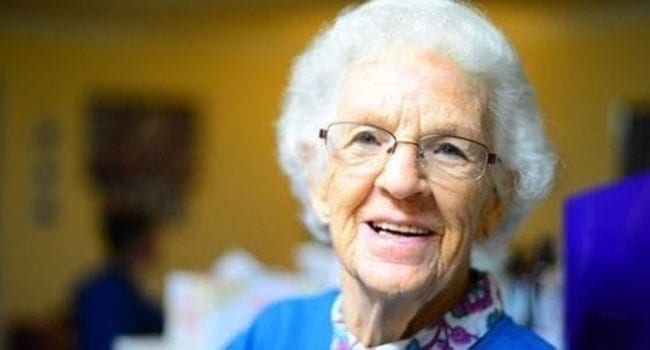 Chris Hadfield has posted a video on YouTube entitled An Astronaut’s Guide to Self Isolation, in which he offers some valuable advice.
Chris Hadfield has posted a video on YouTube entitled An Astronaut’s Guide to Self Isolation, in which he offers some valuable advice.
The Canadian pilot and astronaut spent 166 days in the International Space Station in isolation. He says it’s an extremely dangerous environment where astronauts thrive in finding ways to be productive.
The number one tip Hadfield gives to viewers is that we need to understand the actual risk. “Don’t just be afraid of things, go to a credible source and find out what is truly the risk you are facing.”
So what’s the actual risk of contracting and dying of COVID-19?
According to the numbers, if you’re over 70 and living in a seniors housing complex, your risk is substantial. In fact, in France, one-third of all COVID-19 deaths have been to the elderly living in care facilities. Italy, Germany and Spain have all reported significant proportions of their deaths to the elderly in care facilities.
In Canada, the numbers aren’t all that different. Many provinces have reported that close to 50 per cent of the deaths associated with COVID-19 are in seniors’ complexes where people are at most risk. On April 3, B.C. Provincial Health Officer Bonnie Henry reported that 68 per cent of the deaths there were in long-term care facilities.
So clearly, people shouldn’t risk transmitting disease to seniors and must avoid contact with seniors’ complexes.
As I wrote last week, Sweden’s leaders evaluated the risks and took a different stance than most other countries. Restaurants, public spaces and businesses remain open. The government is encouraging social distancing, banned gatherings over 50, promotes considerable hand washing, and encourages sick or at-risk people to stay home.
Sweden’s leaders haven’t shut down the country and the effect on business, unemployment and the economy has been nothing like it has been in countries enforcing lockdowns.
From a scientific perspective, their approach seems to be working. Compare Sweden with the state of New Jersey, which has imposed a lockdown. Sweden has a population of 10.3 million people, with 11,445,000 cases of COVID-19 and 1,033 deaths at the time of writing, while New Jersey has 8.9 million residents, 68,824 cases and 2,850 deaths.
Sweden is being criticized for having being lax about COVID-19, yet the numbers tell a different story.
I don’t want to suggest that COVID-19 isn’t a serious disease. It is and at the time of writing 735 people have died in Canada. What I’m suggesting is that, as Hadfield said, we need to look at the real risks and the facts.
Exiting the lockdown with care and intelligence by Pat Murphy
According to Statistics Canada, 216 people die of cancer every day in this country, as do 145 people from heart disease and 54 from the flu, pneumonia and respiratory disease. Yes, every day of the year!
This means that while we’ve been laser focused on 735 deaths from COVID-19, 4,600 people have died from the flu, pneumonia and respiratory illness in our country, over 12,000 people have died from heart failure, and more than 18,000 have passed away from cancer.
Yet there’s no mention in the press or social media of those lives and the fact that many of them died without being surrounded by their families and the loved ones who care for them because our hospitals have been locked down.
We’ve never shut down the economy to try to deal with these illnesses, so we need to give some perspective to the COVID-19 lockdown.
There has been some benefit to the environment and to many families as a result of this slowdown of the economy. Many organizations have had to be innovative and leaders have had to step up because they’re going to be judged by their performance during this time.
However, there’s considerable unfounded speculation from political leaders and politicians that the country and businesses will need to remain in this state of closure for months and that this illness is going to kill hundreds of thousands of normally healthy Canadians.
A continued state of business closure is going to result in the permanent – not temporary – unemployment for many people as businesses permanently close. If this happens, all levels of government are going to have to lay off workers and cut back services as people default on their taxes. (City of Vancouver officials have already said they’re worried about being able to continue to function as normal.)
There’s still considerable uncertainty about how we’re going to pay for the growing federal and provincial deficits needed to stabilize the economy right now.
The Institute for Health Metrics and Evaluation’s projections are being used by state-level governments in the U.S. to forecast infections, deaths and equipment shortages, using data provided by the World Health Organization. It says April 11 marked the peak of COVID-19 infection spread in the United States and the disease is now on the decline.
The fear-mongering, without scientific backing, about the need for months of lockdown is unacceptable. If Canadians were given the true numbers and risks, they could make up their own minds without anxiety.
Let’s encourage businesses to get back to work with certain precautions, such as social distancing when around seniors, regular hand washing to avoid transmission of illnesses, and protection for the most vulnerable, including business owners who are at risk of losing everything.
Dave Fuller, MBA, is an award winning business coach and a partner in the firm Pivotleader Inc. Comments on business at this time? Email [email protected]
The views, opinions and positions expressed by columnists and contributors are the author’s alone. They do not inherently or expressly reflect the views, opinions and/or positions of our publication.


